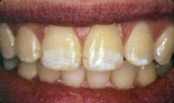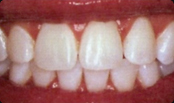Tooth Removal La Mesa
If a tooth damaged beyond repair, most often from decay or trauma, it will need to be extracted from its socket. Sometimes, a tooth will need to be removed for other reasons, these include:
- Wisdom teeth
- A tooth blocking other teeth from coming in
- Teeth infected by cancer drugs
- Teeth infected by an organ transplant
- Creating room for teeth to move into the correct place when receiving braces
Treatment Procedure
There are two types of tooth removal:
- A simple tooth extraction is done when the tooth is visible in the mouth and is typically performed by your dentist. The dentist will use a tool called an elevator to loosen the tooth, and then remove it using something called forceps that resemble tongs. When undergoing a simple extraction, most patients receive a local anesthetic through an injection and may or may not receive additional pain medication after the procedure.
- A surgical tooth extraction is done when a tooth hasn’t come in or broke at the gum line. Most often, this type of extraction is done by a surgeon, but your regular dentist can perform a surgical extraction as well. During a surgical extraction, an incision is made in the gum and sometimes the bone surrounding the tooth is cut as well. Patients receive a local anesthetic and often receive anesthesia through an IV.
Follow-Up
Even after simple extractions, patients can expect to feel some discomfort and can take nonsteroidal anti-inflammatory drugs as recommended by the dentist. After a surgical extraction, some pain is to be expected, and patients might be prescribed pain medication for a few days after surgery.
As with any surgery, you will be given detailed post-surgery instructions to follow. Along with medication recommendations, follow-up instructions will likely include information on what to eat, how to reduce swelling, using a salt water rinse, and avoiding things like smoking, spitting, and using a straw.
Before / After

